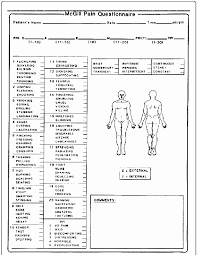Over time, I will be putting some of my most effective medical English teaching materials on the members only page and encourage other members to do the same by first sending materials to me through the EAMET contact page.
Note that there is also a separate page for Clinical Case Presentation materials accessible to all.
Websites Offering Simple EMP Materials – Good for those new to the EMP game
There are a few online websites that offer guidelines and sample materials for EMP teachers. Many of these are geared towards lower-year students and teachers who have little or no medical background. One of these is Hospital English. Another is the website of Alex Case, an EMP teacher of great experience based in Japan.
Recommended textbook for EFL Medical Students
I often get asked about appropriate textbooks for medical students learning English as a foreign language. Although I have used CUP’s English in Medicine for over 20 years, I have to admit that prolific medical English author Virginia Allum’s English for Medical Purposes: Doctors (she has authored a Nurses’ English book as well) remains one of the most comprehensive and user friendly on the market. One author of English in Medicine, Eric Glendinning, has a new textbook entitled: Professional English in Use: Medicine, that focuses upon the terminological side of medicine. Ros Wright is another veteran in the field and her English for Nursing series should have worldwide appeal..
Further Teaching Ideas and Materials:
The McGill Pain Index – The most comprehensive English pain descriptor
Pain, being largely subjective, can be hard to measure or express. Moreover, words and phrases that express types of pain often do not translate well between languages. How can teachers manage these in an EMP classroom?
Internationally, the most widely used pain index is the McGill (Melzack) Pain Questionnaire, or Pain Index, which was developed by Dr. Roland Melzack at McGill University in Montreal, Canada, in 1971.
If you look at the sample linked here …it initially looks like just another taxonomy of pain terms, but the McGill Index is actually much more than that. Often we think that once we have elicited one pain term from a patient, or maybe a degree of intensity on a 1-to-10 scale, our history-taking on pain is complete.
The McGill Index/Questionnaire instead divides pain descriptors into sensory (numbers 1-10, the physical sensation), affective (11-15), and evaluative (16) factors, plus two extra miscellaneous categories for emotional/affective (20) and tension-related (17-20) qualities.
The sensory items (1-10) are further broken down into sub-categories involving similar types. These are entered into the Pain Rating Index (PRI) and combined with data regarding present pain intensity (PPI), frequency, accompanying symptoms, and affective factors such as sleep patterns, food intake, and activity in order to get a well-rounded understanding of the patient’s pain.
Basic data on the patient’s name, use of analgesics, dosage, and time factors set the foundation of the investigation and a two-sided physical diagram is also included to accurately locate the pain.
Mastering this index/questionnaire is, I believe, worth a lesson in your medical/nursing students’ English class.
My suggestion is to avoid the tendency to simply have them remember or learn all the items listed in sections 1-20. Although it is useful if students learn all these items passively (recognition upon reading), the more central function in the classroom should be to understand the delineation and relationships between the different categories.
Instead of a vocabulary emphasis, I suggest focusing on combining the variety of information in order to establish a comprehensive description of the patient’s pain. This can be done as a role-play between healthcare professional and a patient or as health care worker – health care worker conveyance of patient data. Students can self-select data (creating a patient pain ‘profile’) and then convey it in role-play form in an accurate and comprehensive manner, with the listener marking the pain index questionnaire accordingly.
*Users should note that many variations of this index exist and that it can be adjusted as needed.

